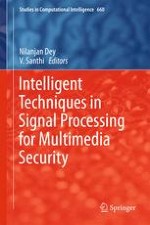2017 | OriginalPaper | Chapter
Face Recognition Under Dry and Wet Face Conditions
Authors : K. Dharavath, F. A. Talukdar, R. H. Laskar, N. Dey
Published in: Intelligent Techniques in Signal Processing for Multimedia Security
Publisher: Springer International Publishing
Activate our intelligent search to find suitable subject content or patents.
Select sections of text to find matching patents with Artificial Intelligence. powered by
Select sections of text to find additional relevant content using AI-assisted search. powered by
